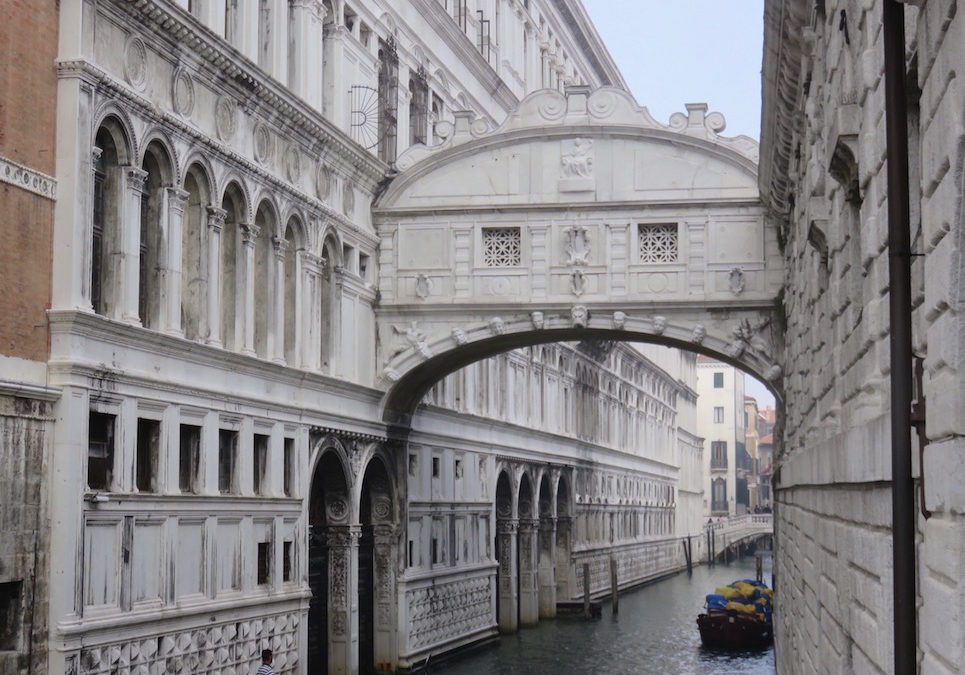 I made my way through the narrow passage, following a single-file line of tourists. But if this were the 1600s, I would be following a line of prisoners, and our friendly tour guide with the headset would most likely be our jailer.
I made my way through the narrow passage, following a single-file line of tourists. But if this were the 1600s, I would be following a line of prisoners, and our friendly tour guide with the headset would most likely be our jailer.
I reached one of the small windows and, like everyone who shuffles down this passageway, I peeked through the decorative grill and caught a glimpse of one of the canals of Venice, Italy.
And then I sighed.
I was crossing the Bridge of Sighs, one of the most famous bridges in the world. In the 1600s, this bridge carried prisoners from courtrooms, where they had just been sentenced, and into the Venetian jail cells. The bridge is sparse and Spartan on the inside, but the outside is gorgeous—an ornamental structure made of brilliant white limestone.
According to legend, prisoners crossing this enclosed bridge would take one last look through the barred windows at the beautiful world of Venice outside—and they would sigh. A more romantic legend about the Bridge of Sighs says that if a man and woman kiss in a gondola beneath the bridge, their love will last forever.
The name of the bridge comes from a poem written by Lord Byron, which says, “I stood in Venice, on the Bridge of Sighs, a palace and a prison on each hand.â€
A “palace and a prisonâ€â€”Whether the legend of sighing prisoners is true or not, the poem is accurate in that description, because the bridge truly does connect a palace with a prison. Before crossing the Bridge of Sighs, our tour group strolled through one of the most magnificent palaces I have ever seen—the Doge’s Palace, with ceilings of gold and rich, intricately carved wood. Then we headed from the palace, across the bridge, and into the prison.
Bridges are a powerful symbol—a metaphor for “crossing over.†And our lives are all about making different crossings. We cross from childhood to adulthood. We cross from suffering into healing. We cross from sin into salvation. And we all eventually cross from life into death.
In addition, the Bible is filled with many crossings, although most of these do not involve literal bridges. Moses led his people across the Red Sea, from slavery to freedom; the Israelites crossed the Jordan River, from the Wilderness to the Promised Land; and Jesus crossed the Sea of Galilee with His disciples, carrying them through a storm.
Sometimes, we have no choice about our crossings. For instance, we will all someday cross from life to death. But even in those crossings, we still face a different sort of choice. We must choose what we believe is on the other side of the bridge. Do we believe we are going to cross over to a palace or a prison? Freedom or slavery? Wilderness or Promised Land?
We try to peer to the other side of the bridge, and we wonder…Is there a palace or a prison waiting for us on the other side? Or something else? What does God have in store for us? What do we choose to believe?
In Venice, I saw the palace, and I saw the prison.
I choose the palace. And when I make this final crossing, I have a sneaking suspicion that I will let out a deep, satisfied sigh.
By Doug Peterson

